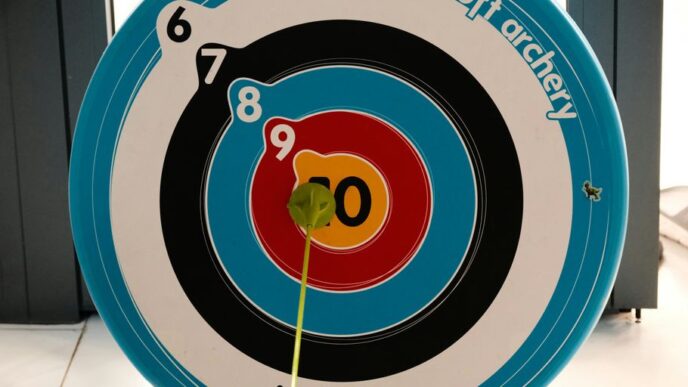Hey, are you ready to level up your trading skills and dive deeper into swing trading options? Whether you are a complete newbie at the very beginning of your financial learning journey or an experienced trader in search of new strategies, getting a grip on those higher time frames can open so many doors.
In this blog post, we are going to discuss the basics of swing trading options, which will help you understand all those market rhythms and price movements. No more confusion; simple tips and tricks are coming your way to make smart choices in this ever-changing scene. Get pumped to ride the waves of profit as we dive into mastering higher timeframes for successful trades!
Introduction to Swing Trading Options
Swing trading options present to you an interesting way of tapping into the financial markets, especially for newbies looking to grasp things fast. This will help traders take advantage of price movements in the short to medium term without being glued to the screens. Just imagine making strategic trades over days or weeks in a way that fits your lifestyle.
But hey, what if you could take your game up a notch? Focus in on those higher timeframes, and you’ll get a much better feel for market trends while tuning out all that noise that usually messes with newbie traders. Higher time frames give you a steadier look at price action, so you can make smart decisions without second-guessing yourself.
Swing trading options: if you really want to nail those higher time frames, then this is your guide. We’ll cover all the basic things that change when using different time frames in your strategy and some pretty cool technical analysis tricks to give a boost to your skill set. So buckle up for an exciting ride through swing trading options designed just for newbies!
Definition Of Swing Trading And Its Advantages:
Swing trading is a very popular trading strategy that focuses on capturing short to medium-term price movements in the market. The positions are generally held for a few days or weeks, in which traders can definitely ride out fluctuations to gain big.
The main advantage to swing trading options is in the flexibility. Unlike day trading, you will not need to compulsively observe your trade, which suits a full-time worker or for people with other commitments who still want to be in the market.
Moreover, swing trading offers great risk-reward potential. Through technical analysis and knowledge of trends, traders are now able to enter at the best points to maximize profits and minimize risks.
Another nice thing about options is that you can leverage volatility. You can trade both upward moves and downward swings by using different strategies like puts or calls. That really opens up a whole lot of different ways to make money when the market moves.
Why Look At Higher Timeframes?
Looking at higher timeframes can really improve how you trade. The further you zoom out, the more the chaos of short-term ups and downs cancels out, which makes it easier to make smarter choices.
Higher timeframes tend to have larger trends that are not visible on lower ones. Spotting these trends earlier may also give better entry and exit levels.
And of course, higher timeframes reduce emotional stress from whipsaws of price movements. You are far less likely to act on emotion when trades are seen through a wider lens.
Moreover, swing trading options on those longer intervals usually involves fewer strategy adjustments. That means less time in front of the charts and more time living life away from trading.
In a nutshell, it helps develop patience and discipline, which are quite crucial for any level of traders.
Understanding Higher Timeframes
Higher timeframes are important in swing trading options. They allow for a larger view of the market’s trend while filtering out most of the noise found on the lower timeframes.
Knowledge of different timeframes can lead to better decisions. Daily, weekly, and monthly charts can show patterns that may not be apparent on intraday charts.
It is important for beginners to choose the right timeframe, harmonious with their trading style. If you hold positions longer than a few days, then you might want to stick to daily or even weekly charts.
These higher timeframes are great for helping traders find the best times to jump in and out. They let you really look at price movements over a longer stretch, which can mean bigger profits.
With experience, the best is trying different higher time frames to really improve your analysis. This way, you can confirm signals and have more confidence in your trades while dealing with the ups and downs of swing trading options.
Explaining Various Timeframes And Their Importance
Timeframes are super important in swing trading options. They shape how you see market movements and how well your trading strategy works.
Lower timeframes, such as 1-minute or 5-minute charts, have the fastest updates but create the most noise. Noise can blur decision-making for a newcomer who might be susceptible to acting on momentary changes in price.
On the other hand, higher timeframes—such as daily or weekly charts—give you a bigger picture of the trends. They enable traders to identify important levels of support and resistance and ignore the small ups and downs.
Picking the right time frame is in line with your goals and risk tolerance. If you’re after quick profits, shorter frames might appear attractive at first. However, those looking for sustained growth will probably find more reward in paying attention to higher time frames since they reveal more profound insights into market behavior.
Identifying The Best Time Frame For Your Type Of Trading
It is very important to pick a timeframe for your success in swing trading. Every trader has his or her own vibe, and knowledge of which timeframe suits makes all the difference.
If you like making decisions quickly and are comfortable with making quick changes, then shorter timeframes like the 1-hour or 4-hour charts may be more your style. They give more signals but require constant monitoring.
On the other hand, if you want to relax a bit and plan wiser, take a look at daily or weekly charts. Those longer time frames keep you focused on seeing trends without the squeeze.
Consider your availability, too. If you can’t sit around all day trading, then higher timeframes might be your friend. Reflect on how much time you would like to invest and act accordingly.
Playing with various intervals will make it clearer what works best for your style and comfort level as a trader.
Mastering Higher Timeframe Technical Analysis
Mastering technical analysis on higher timeframes is the key to swing trading options. It helps traders spot trends and reversals more effectively.
Key indicators are really important in the whole thing. Moving averages, Bollinger Bands, and the Relative Strength Index (RSI) could give you some excellent insights regarding price action over a longer time. These tools really help cut through the daily ups and downs.
Thirdly, there are chart patterns that give very important information. Double tops and head-and-shoulder formations are signs where the market may go. Recognizing these patterns can improve your decisions.
It’s a very useful strategy to use different timeframes. The daily chart compared to the weekly one will show you better market trends, and you can find the entry and exit points more accurately.
This way not only makes things more accurate but also pumps up your confidence when you’re trading in the sometimes wild world of options.
Best Indicators And Chart Patterns To Follow
Swing trading uses important indicators, and some of the most popular choices include moving averages, which help in figuring out the trends based on price smoothing. A simple moving average, or SMA, may signal potential entry or exit points when considering a specific stock.
Another strong indicator is the Relative Strength Index, or RSI. This momentum oscillator measures the velocity and magnitude of price changes. An RSI above 70 could be overbought, and below 30, it could be oversold territory.
Chart patterns are very important when making decisions. Patterns such as head and shoulders or double tops may completely signal reversals. On the other hand, flags and pennants typically indicate that trends will continue.
Mixing these indicators with chart patterns really boosts your analysis. It helps you make smart choices based on how the market’s acting instead of just guessing.
Tips For Using Various Time Horizons To Make More Informed Decisions.
Looking at different time frames can dramatically help how you decide when swing trading options.
First, view a larger timeframe—a daily or a weekly chart, for example—to expand the view in this case and to find important areas of support and resistance.
Next, have a look at lower time frames, such as the hourly or 15-minute charts. These smaller intervals will allow you to identify entry points more accurately, on top of keeping an eye on possible reversals.
Look for congruence between both timeframes. If the higher timeframe is showing bullish momentum and the lower timeframe is presenting some sort of pullback, look to enter a trade during that pullback.
Combining these observations will help you refine your approach and increase your conviction in trading. This is all about bringing different market perspectives together for wiser decisions.
How Do You Pick The Best Swing Trading Options?
Swing trading involves understanding the types of options to choose the appropriate alternatives. A call and a put—the most basic types of options—are learned individually, each one providing different chances as the market moves.
Long-term vs. short-term, choose based on your risk tolerance. Longer expiration dates give you more time to have price movement, whereas the shorter-term contracts, while potentially paying out sooner, are exponentially more volatile.
Look at implied volatility as well. Increasing volatility generally means higher premiums and will affect your overall profitability. You must grasp how this plays into pricing.
Be also mindful of the characteristics of the underlying asset. Look for stocks or ETFs with consistent patterns and good liquidity, as they will make entering and exiting trades smoother.
Also, always check open interest—that measures market activity around particular options contracts and will help you better gauge potential price moves.
Types Of Options Contracts And Their Characteristics
There are two most common types of options contracts: call options and put options.
Call options provide the buyer with the right, but not the obligation, to buy an underlying asset at a predetermined price before expiration. This type of option is ideal for traders who believe the value of the asset will increase.
On the other hand, put options allow the buyer to sell an underlying at a predetermined price. Usually, traders take puts when they believe market prices are going to fall.
Each of these types of contracts will have a different set of characteristics, including strike price, expiration date, and premiums paid. You must understand these elements in trading effectively.
There are some cooler options like straddles or spreads that mix different positions for a bunch of outcomes. Checking out different contract types can really level up your swing trading game.
Points To Consider When Selecting An Option
The underlying is very important in swing trading. Understand the volatility and past historical patterns of it. This will give an idea of how much price could swing.
Next, consider the expiry date of your option contract. The longer it is, the more time there would be for any trade to develop but possibly at higher premiums. Shorter durations can be riskier but allow for quicker profits, provided the timing of entry is right.
Another important thing to consider is the strike price. Pick a level that matches up with what you think about the support and resistance zones. That way, you’re jumping into positions that are more likely to succeed.
Also, consider open interest and volume in the options market. High levels indicate liquidity, which allows easier entry and exit from trades with less slippage.
Finally, keep an eye on the implied volatility. Higher levels mean higher premium prices but also possibly greater expected moves in the price of the underlying stock.
Step-By-Step Process To Carry Out A Swing Trading On A Higher Time Frame
Pulling off a swing trade on a bigger timeframe takes some chill and being spot on. First, you gotta figure out where to jump in using things like moving averages or RSI. These tools can totally help you see when the asset’s picking up speed.
Having picked an entry price, define clear exit points. This may involve placing limit orders at the resistance levels where profit-taking may occur.
Risk management is important here. Decide how much of your total capital you are willing to risk on the trade, usually not more than 1-2%. Use stop-loss orders to protect against unexpected market moves.
Finally, monitor your trade on a regular basis, but not to the extent of daily over-analysis. Staying focused on broader trends rather than minute fluctuations can help maintain perspective and prevent emotional decision-making.
Entry And Exit Points
Knowing when to enter and exit is very important in swing trading options. A good entry should be in line with your view of the market trends, indicators, or chart patterns.
Look for confirmation of the trend you are in. It may be a breakout above resistance levels or some positive signs in important indicators, such as RSI or MACD.
A solid entry plan is what will help you avoid those impulsive decisions made based on emotions. Setting exit points, on the other hand, takes discipline.
Consider using profit targets based on risk-reward ratios to lock in gains while allowing enough room for fluctuations.
The trailing stops are a good idea because they dynamically adjust to price movements and therefore assist in locking in profits without closing the position prematurely.
Remember, proper timing can sometimes be the difference between a profitable trade and a missed opportunity.
Risk management Techniques
Risk management is critical in swing trading options, especially for beginners. It helps to safeguard your capital and minimize losses. One good trick is to set stop-loss orders.
It will automatically let you bail on a position if it goes south beyond a certain point. In this way, you will manage to cut down on potential losses and keep your emotions in check.
Another approach is position sizing. Determine how much of your total capital you want to risk on any one trade. A general rule of thumb is not to risk more than 1-2% per trade, so even if you go through a string of losses, you won’t wipe out your account.
Diversification is important in managing risk. Share your bets across a range of sectors or asset classes, and the impact of any one loss will be muted.
Conclusion Summary
Finally, always review and adjust your strategies based on the performance metrics. Analyzing trades regularly will help refine techniques over time and bolster confidence in future decisions. – Swing trading options for beginners: it’s a whole world of possibilities.
It is one of the ways traders make profit from market movements without necessarily having to monitor the markets closely.
Focus on higher timeframes, and you can manage your trades better with less stress. It is very important to understand why timeframes matter when putting a solid swing trading strategy together.
Higher timeframes will also have clearer trends and less background noise, making it a lot easier to create smart decisions.
Picking the right timeframe that fits your style will totally change how you experience trading. Higher timeframes can be navigated only by mastering technical analysis.
Major indicators, together with chart patterns, are used in this line, allowing a trader to determine potential entry and exit points more effectively than ever.
Combining multiple timeframe analyses can improve decision-making and increase confidence in your trades.
There is some thinking that goes into choosing the right options contracts—considering their characteristics and what’s behind the price change.
If you take your time in picking them right, you will be in a good spot to nail your strategies.
Swing trading is all about having a clear plan of when to enter and exit, accompanied by good risk management.
If you follow the game plan, you will definitely save your money and increase your probability of making a profit. Swing trading options—the art in all its glory—requires a strategic mind with an understanding of timelines, technical tools, option types, and execution methods for higher time frames. The journey is worth taking.












